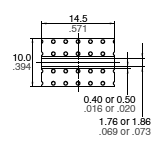 Business
> Industrial Devices
> Automation Controls Top
> Components & Devices
> Relays / Couplers > Microwave Devices
> Microwave Devices Lineup
> RJ Relays
> Cautions For Use
Business
> Industrial Devices
> Automation Controls Top
> Components & Devices
> Relays / Couplers > Microwave Devices
> Microwave Devices Lineup
> RJ Relays
> Cautions For Use
RJ Relays
|
RJ Relays Cautions For Use
For general cautions for use, please refer to the "Relays Cautions For Use".
1.Coil operating power
Pure DC current should be applied to the coil. The wave form should be rectangular. If it includes ripple, the ripple factor should be less than 5%.
However, check it with the actual circuit since the characteristics may be slightly different. The nominal operating voltage should be applied to the coil for more than 20 ms to set/reset the latching type relay.
2.Coil connection
When connecting coils, refer to the wiring diagram to prevent mis-operation or malfunction.
3.External magnetic field
Since RJ relays are highly sensitive polarized relays, their characteristics will be affected by a strong external magnetic field. Avoid using the relay under that condition.
4.Cleaning
For automatic cleaning, the boiling method is recommended. Avoid ultrasonic cleaning which subjects the relays to high frequency vibrations, which may cause the contacts to stick.
It is recommended that alcoholic solvents be used.
5.Tape and reel packing
1.Tape dimensions
|
(General tolerance: ±0.1 ±.004)
2.Dimensions of plastic reel
|
6.Conditions for operation, transport and storage conditions
1.Ambient temperature, humidity, and atmospheric pressure during usage, transport, and storage of the relay:
| (1) | Temperature: –30 to +70°C –22 to +158°F (However, tolerance range is –30 to +60°C –22 to +140°F if package is carried as is.) |
|
| (2) | Humidity: 5 to 85% RH (Avoid freezing and condensation.) The humidity range varies with the temperature. Use within the range indicated in the graph below. |
|
| (3) | Atmospheric pressure: 86 to 106 kPa Temperature and humidity range for usage, transport, and storage: |
|
2.Condensation
Condensation forms when there is a sudden change in temperature under high temperature and high humidity conditions. Condensation will cause deterioration of the relay insulation.
3.Freezing
Condensation or other moisture may freeze on the relay when the temperature is lower than 0°C 32°F. This causes problems such as sticking of movable parts or operational time lags.
4.Low temperature, low humidity environments
The plastic becomes brittle if the relay is exposed to a low temperature, low humidity environment for long periods of time.
5. Storage procedures for surface-mount terminal types
Since the relay is very sensitive to humidity, it is packed in humidity-free, hermetically sealed packaging.
When storing the relay, be careful of the following points:
- 1.Be sure to use the relay immediately after removing it from its sealed package.
- 2.When storing the relay for long periods of time after removing it from its sealed package, we recommend using a humidity-free bag with silica gel to prevent subjecting the relay to humidity.
Furthermore, if the relay is solder mounted when it has been subjected to excessive humidity, cracks and leaks can occur. Be sure to mount the relay under the required mounting conditions.
7.Soldering
1.Surface-mount terminal
In case of automatic soldering, the following conditions should be observed
1.Position of measuring temperature
|
2.IR (infrared reflow) soldering method
|
Temperature rise of relay itself may vary according to the mounting level or the heating method of reflow equipment. Therefore, please set the temperature of soldering portion of relay terminal and the top surface of the relay case not to exceed the above mentioned soldering condition. It is recommended to check the temperature rise of each portion under actual mounting condition before use.
2.Standard PC board terminal
Please meet the following conditions if this relay is to be automatically soldered.
| (1) | Preheating: Max. 120°C 248°F (terminal solder surface) for max. 120 seconds | |
| (2) | Soldering: Max. 260±5°C 500±9°F for max. 6 seconds The effect on the relay depends on the actual substrate used. Please verify the substrate to be used. Moisture-proof packaging enables RJ relay's standard PCB type capable for reflow soldering. Please contact us in the case of reflow soldering considerations. |
3.Hand soldering
Please meet the following conditions if this relay is to be soldered by hand.
| (1) | Wattage: 30 to 60 W | |
| (2) | Tip temperature/time: 280 to 300°C 536 to 572°F for max. 5 seconds The effect on the relay depends on the actual substrate used. Please verify the substrate to be used. |
4.Avoid high frequency cleaning since this may adversely affect relay characteristics. Use alcohol-based cleaning solutions when cleaning relays.
8.Measuring method (50Ω type)
|
Connect connectors 1 and 2 respectively to PORT 1 and PORT 2. Perform calibration using the 3.5 mm .138 inch calibration kit (HP85052B).
| No. | Part number | Description |
|---|---|---|
| 1 | HP 85131 | 3.5 mm .138 inch Test port, Extension cable |
| 2 | HP 83059 | 3.5 mm .138 inch Coaxial Adapter |
After calibration, connect the D.U.T board and measure. Non measure terminals: 50 Ω termination
*Isolation (Between contact sets): Measured between open contact (4-5 terminal, 9-10 terminal)
Notes:
1. All bottom surface of the base should be touched closely or soldered with PC board ground.
2. 4 ribs should be soldered with PC board ground.
|
||||||||||||
Material: Glass PTFE double-sided through hole PC board R-4737 (manufactured by our company)
Board thickness: t = 0.8 mm
Copper plating: 18μm
Connector (SMA type receptacle)
Product name: R125 510 (RADIALL)
Insertion loss compensation;
The insertion loss of relay itself is given by subtracting the insertion loss of short-circuit the Com and the NC (or NO).
(signal path and two connectors)
9.Others
1.The switching lifetime is defined under the standard test condition specified in the JIS* C 5442-1996 standard (temperature 15 to 35°C 59 to 95°F, humidity 25 to 75%).
Check this with the real device as it is affected by coil driving circuit, load type, activation frequency, activation phase, ambient conditions and other factors.
Also, be especially careful of loads such as those listed below.
- When used for AC load-operating and the operating phase is synchronous. Rocking and fusing can easily occur due to contact shifting.
- High-frequency load-operating
When high-frequency opening and closing of the relay is performed with a load that causes arcs at the contacts, nitrogen and oxygen in the air is fused by the arc energy and HNO3 is formed.
This can corrode metal materials.
Three countermeasures for these are listed here.
- 1.Incorporate an arc-extinguishing circuit.
- 2.Lower the operating frequency
- 3.Lower the ambient humidity
2.Use the relay within specifications such as coil rating, contact rating and on/off service life.
If used beyond limits, the relay may overheat, generate smoke or catch fire.
3.Be careful not to drop the relay. If accidentally dropped, carefully check its appearance and characteristics before use.
4.Be careful to wire the relay correctly. Otherwise, malfunction, overheat, fire or other trouble may occur.
5. If a relay stays on in a circuit for many months or years at a time without being activated, circuit design should be reviewed so that the relay can remain non-excited.
A coil that receives current all the time heats, which degrades insulation earlier than expected.
A latching type relay is recommended for such circuits.
6.The latching type relay is shipped in the reset position.
But jolts during transport or impacts during installation can change the reset position.
It is, therefore, advisable to build a circuit in which the relay can be initialized (set and reset) just after turning on the power.
7.If silicone materials (e.g., silicone rubbers, silicone oils, silicone coating agents, silicone sealers) are used in the vicinity of the relay, the gas emitted from the silicone may adhere to the contacts of the relay during opening and closing and lead to improper contact.
If this is the case, use a material other than silicone.,
8.We recommend latching type when using in applications which involve lengthy duty cycles.
* Japanese Industrial Standards
|
BY EMAIL
Requests to customers (Automation Control Components & Industrial Device) [Excluding specific product]
Requests to customers (Automation Control Components & Industrial Device) [For specific product]
Requests to customers (FA Sensors & Components [Excluding motors])
Requests to customers (Dedicated to industrial motors)
- COMPONENTS & DEVICES
- FA SENSORS & COMPONENTS
- Fiber Sensors
- Photoelectric Sensors / Laser Sensors
- Micro Photoelectric Sensors
- Light Curtains / Safety Components
- Area Sensors
- Inductive Proximity Sensors
- Particular Use Sensors
- Sensor Options
- Wire-Saving Systems
- Programmable Controllers / Interface Terminal
- Human Machine Interface
- Pressure Sensors / Flow Sensors
- Measurement Sensors
- Static Control Devices
- Laser Markers / 2D Code Readers
- Machine Vision System
- Energy Management Solutions
- Timers / Counters / FA Components
- MOTORS









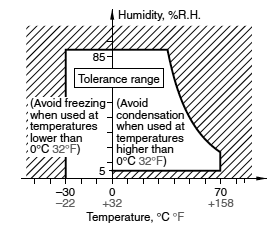

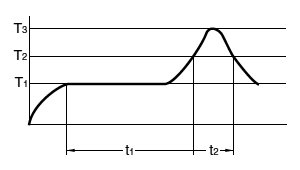
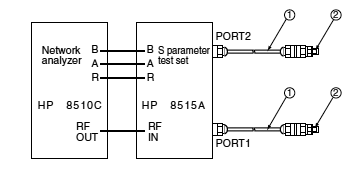
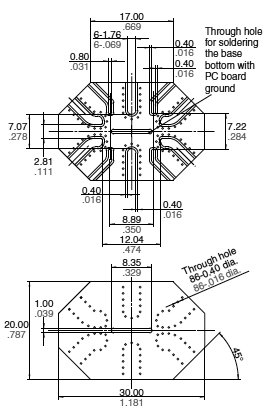
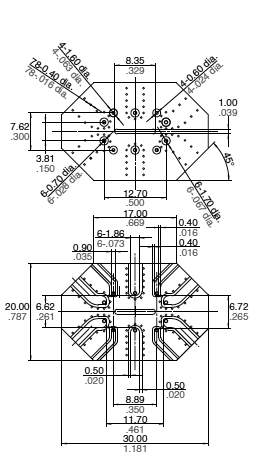
 SMA connector to be soldered
SMA connector to be soldered